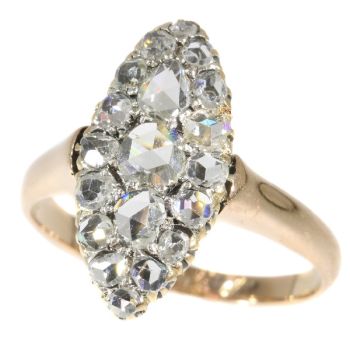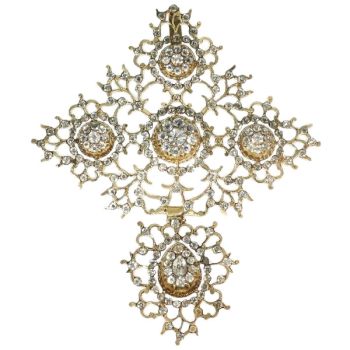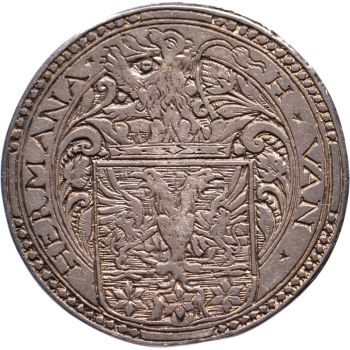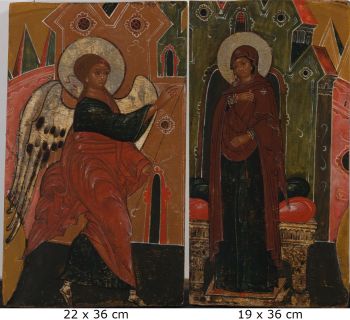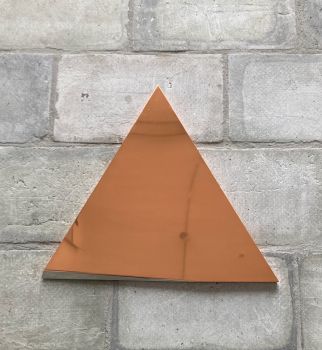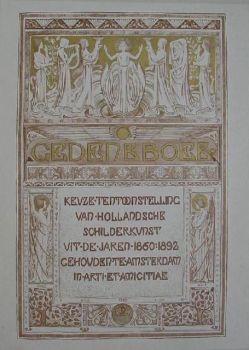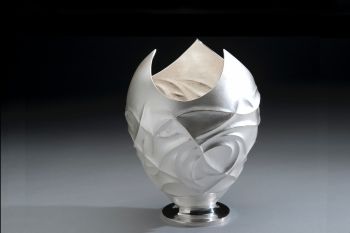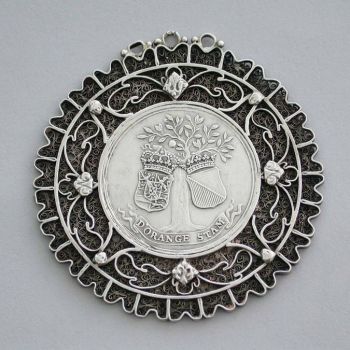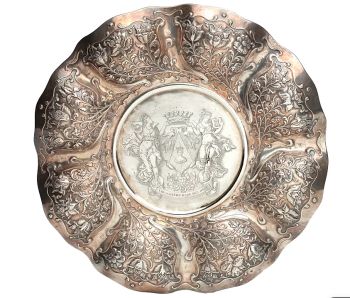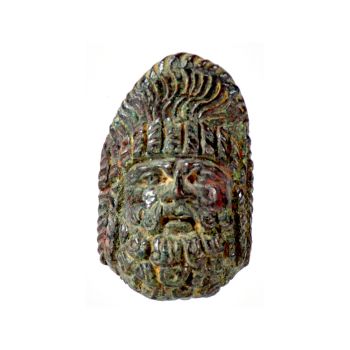Undertaker's riot in Amsterdam 1696
Artista Sconosciuto
Argento
€ 650
Jongeling Numismatics & Ancient Art
- A proposito di opere d'arteObverse: MOTOS PRÆSTAT COMPONERE FLVCTVS, Neptune in chariot with trident in left hand, crown and coat of arms of Amsterdam on the back of the chariot, blowing winds in the form of human heads
Reverse: HAICYONIBVS. REDVCTIS / SENATVS. AMSTELOD / CIVIBVS. SVIS. HOC / ANTIQVÆ VIRTVTIS . / SPECTATÆQ. FIDEI / PRÆMIVM IARGITVR / MDCXCVI, four kingfishers in a nest on a calm sea, rising sun, banner with Latin text, year in exergue
Variant without signature
OF THE HIGHEST RARITY
Slightly polished
The Aansprekers Riot was a popular uprising that took place in Amsterdam in 1696. 'Aansprekers' were undertakers of a sort, citizens who organised funerals. In January 1696, the council announced that a selection group of 72 aansprekers and lantern bearers would be appointed who would be given the city monopoly on arranging funerals. A group of approximately 250 private aansprekers became victims of this. Furthermore, this made funerals a lot more expensive because they were taxed. The city council had introduced the measure to generate more income due to the declining economy.
After the announcement of the new measure, the aansprekers spread the rumour that the poor would now be treated like trash when they died. Riots broke out in Amsterdam on January 31, 1696. Cheered on by the aansprekers, many poor people took to the streets in anger. On February 1, the militia intervened successfully. To deter the masses, a number of rioters were executed or exiled to Suriname. Yet the undertakers had achieved their goal, because the tax for aansprekers was ultimately not introduced.
Weight: 49.34 g
Diameter: AR 49.5 mm
Grade: Good very fine
Reference: cf vL. IV 161/221.2 - A proposito di opere artista
Può succedere che un artista o un creatore sia sconosciuto.
Alcune opere non sono determinate da chi sono state realizzate o sono state realizzate da (un gruppo di) artigiani. Esempi sono statue dell'antichità, mobili, specchi o firme non chiare o leggibili ma anche alcune opere non sono affatto firmate.
Inoltre puoi trovare la seguente descrizione:
•"Attribuito a …." A loro avviso probabilmente opera dell'artista, almeno in parte
•“Studio di ….” o “Officina di” A loro avviso un'opera eseguita nello studio o nella bottega dell'artista, eventualmente sotto la sua supervisione
•“Cerchio di…” A loro avviso un'opera del periodo dell'artista che mostra la sua influenza, strettamente legata all'artista ma non necessariamente al suo allievo
•"Stile di..." o "Seguace di..." A loro avviso un'opera eseguita nello stile dell'artista ma non necessariamente da un allievo; può essere contemporaneo o quasi contemporaneo
•“Modalità di…” A loro avviso un'opera nello stile dell'artista ma di epoca successiva
•"Dopo …." A loro avviso una copia (di qualsiasi data) di un'opera dell'artista
•“Firmato…”, “Datato…” o “Iscritto” A loro avviso l'opera è stata firmata/datata/inscritta dall'artista. L'aggiunta di un punto interrogativo indica un elemento di dubbio
•"Con firma....", "Con data...", "Con iscrizione..." o “Riporta firma/data/iscrizione” a loro avviso la firma/data/iscrizione è stata aggiunta da qualcuno diverso dall'artista
Sei interessato ad acquistare questa opera d'arte?
Artwork details
Related artworks
Unknown artist
A JAPANESE MODEL OF A NORIMONO, A PALANQUIN1650 - 1700
Price on requestZebregs & Röell - Fine Art - Antiques
1 - 4 / 12Unknown artist
An Amazon Indigenous Kayapo feather headdress1950 - 1960
Price on requestZebregs & Röell - Fine Art - Antiques
1 - 4 / 24Willem Maris
Polderlandschap met koeien en molens op warme zomerdag1880 - 1890
Price on requestPrivate Collection Classic Arts
Dutch School
Arrival of a Dutch East Indiaman in the Table Bay18th century
Price on requestZebregs & Röell - Fine Art - Antiques
Antonie Derkinderen
Memory book Exhibition of Dutch Painting1892
Price on requestKunsthandel Pygmalion
Johannes Evert Akkeringa
'Nettenboetsters' in the Dunes1861 - 1942
Price on requestStudio 2000 Art Gallery
1 - 4 / 24Unknown artist
Japanese art deco lacquervase with Scarab beetle motif1920 - 1950
Price on requestDille Art
Unknown artist
AN UNUSUAL INDONESIAN LOBBED SILVER DISHlate 17th
Price on requestZebregs & Röell - Fine Art - Antiques
1 - 4 / 24- 1 - 4 / 12





